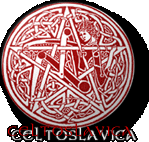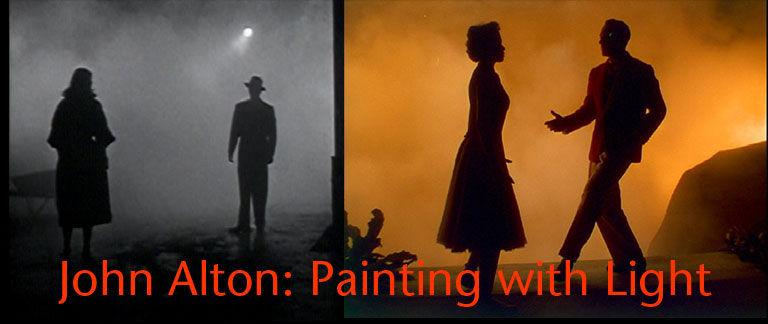
|
John Alton, A.S.C. Born on 5 October 1901, Died on 2 June 1996, |
|
It is often claimed that film noir is more a matter of visual style than of content. If so, cinematographers no less than directors and screenwriters should perhaps be listed among the true auteurs of the noir cycle, and John Alton would certainly rank as one of its prime exponents. In the heyday of the cycle—especially in the early thrillers of Anthony Mann and in Joseph H. Lewis's cult classic, The Big Combo—Alton created archetypes of noir's main genre, the urban thriller. But he also ingeniously extended the idiom into genres with which it is less readily associated, such as the western and the costume drama, Alton's eclectic professional background provided ideal training for the financial and stylistic economies of noir. Born in Hungary, he started his film career at the Cosmopolitan Studios in New York before heading for Hollywood to shoot low-budget silent westerns for the notoriously fast-working "One Shot" Woody Van Dyke. From there he moved to the Paramount studios at Joinville near Paris, then spent six years heading up a new studio in Buenos Aires. on returning to Hollywood in 1939 he found himself assigned to several years of negligible B-movies» By the time he encountered Anthony Mann, he knew just how to lend an aura of quality to the most shoestring production. |
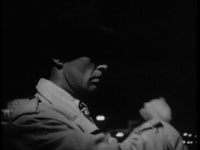 |
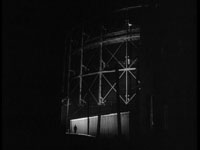 |
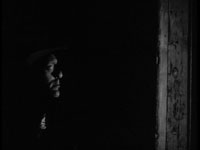 |
 |
 |
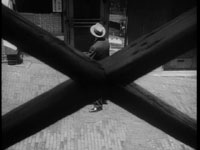 |
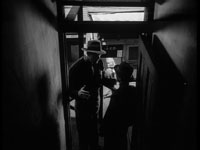 |
 |
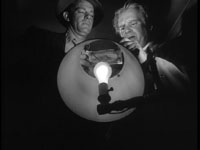 |
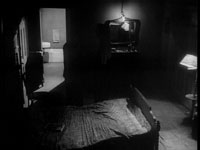 |
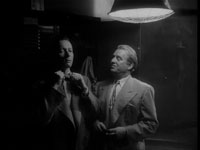 |
 |
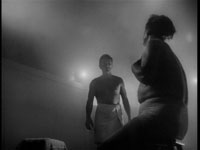 |
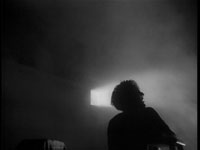 |
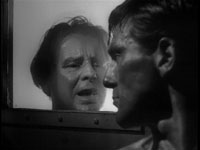 |
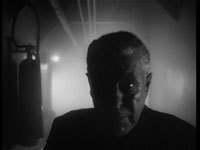 |
|
For some years Alton had been trying to persuade the directors he worked with that a cinematographer didn't simply "pump light into a scene. The light has to tell something. There's a meaning, and it establishes a mood." In Mann he at last found "a director I can really sit down and talk with," someone sensitive to the subtleties of light and shadow. In T-Men, their first film together, and its successors, his "intense downbeat virtuosity," as Stephen Handzo put it, meshed with Mann's acute spatial sense to produce "an unmistakable style: deep perspective compositions with half-illuminated faces in the foreground ... distant backgrounds, ceilinged sets, pervasive darkness and gloom created through high-contrast lighting and filters, angular composition, all creating a screen space at once expansive yet oppressively fatalistic." |
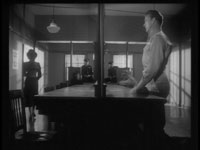 |
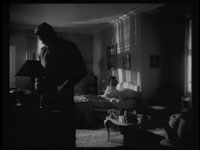 |
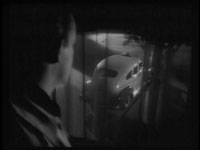 |
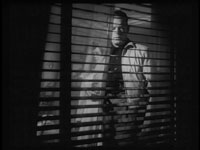 |
 |
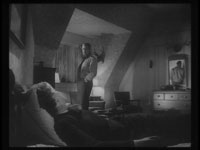 |
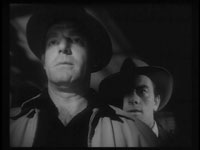 |
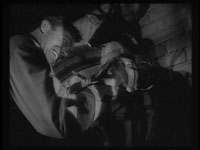 |
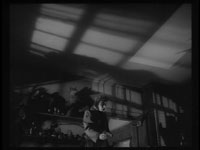 |
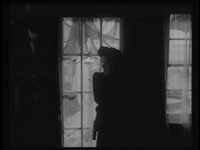 |
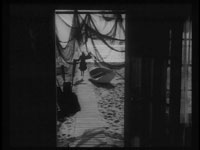 |
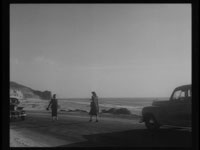 |
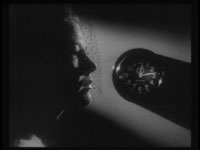 |
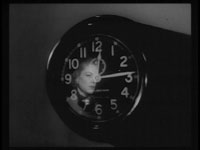 |
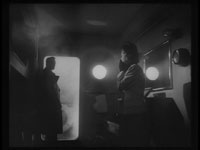 |
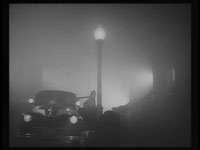 |
|
Mann readily paid tribute to Alton's skill in helping him achieve the maximum effects with the minimum means. For The Black Book, working to the usual modest budget, Alton contrived a richly atmospheric evocation of Revolutionary France, turbulent and treacherous, largely from shadows and silhouettes. He created an equally alienated visual mood for the location exteriors of Border Incident, as also for Devil's Doorway, the first in Mann's great series of westerns. |
 |
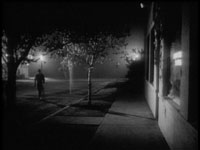 |
 |
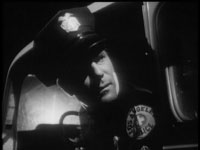 |
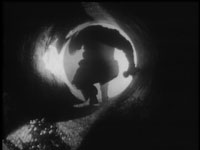 |
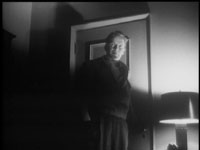 |
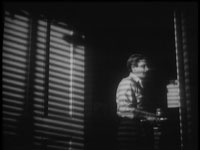 |
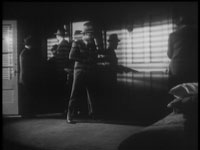 |
 |
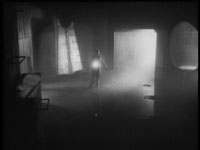 |
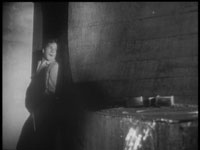 |
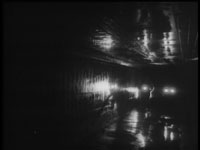 |
|
Though his film noir work Is in many ways his most interesting, Alton was too professional a craftsman to limit himself to a single style. His association with Allan Dwan, which began with Driftwood, took in several of the veteran director's autumnal late westerns, including Silver Lode and Tennessee's Partner. To these he brought an austere lyricism, gently melancholy in its clarity, and long, elegant but unobtrusive tracking shots. In Dwan's Slightly Scarlet he demonstrated another facet of his talent, matching James M. Cain's overheated melodrama with a Technicolor palate of startlingly garish hues set off by areas of deep shadow. The result, according to Andrew Sarris, was "one of the most eye-boggling American movies ever made." Other directors with whom Alton often worked included Vincente Minnelli and Richard Brooks. His Minnelli films saw him turning the glossy MGM house-style to advantage—as in Father of the Bride, where Spencer Tracy's nightmare vision of the wedding ceremony crumbling into disaster is all the more surreal for being shot with such knife-edge crispness. Alton's sole Academy Award came for his work on the climactic final ballet of An American in Paris, set to Gershwin's tone poem. Whatever the pretensions of the ballet itself, there is no gainsaying the virtuosity of Alton's lighting and camerawork. |
 |
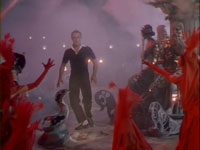 |
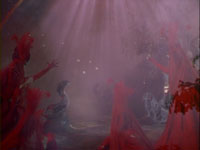 |
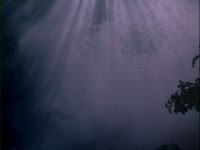 |
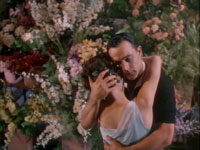 |
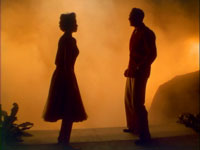 |
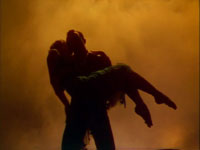 |
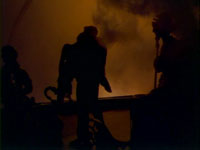 |
 |
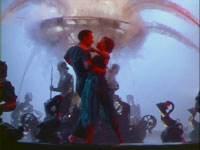 |
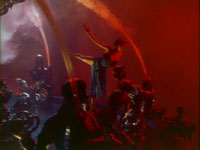 |
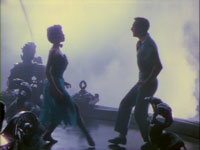 |
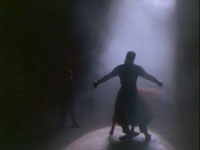 |
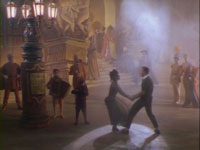 |
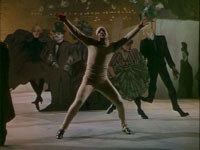 |
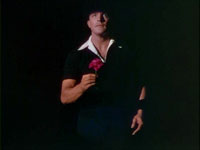 |
|
For Brooks, Alton produced moodier, more downbeat effects, sometimes—as in The Brothers Karamazov—deliberately jarring. In an attempt to suggest the psychological turmoil of Dostoyevsky's characters, he devised an expressionistic lighting scheme that threw deep shadows of saturated primary colours, a technique widely dismissed as crude and overemphatic. A similar approach, but more subtly applied, worked far better in Elmer Gantry, John Fitzpatrick noted how Alton's photography "catches the Dust Bowl reds and browns by day and casts them against blue-black voids at night." Many of the movie's nocturnal episodes, though filmed in colour, convey a noirish feel of claustrophobic obsession. Alton's last masterpiece of pure noir cinematography was The Big Combo, routine gangland-vengeance stuff transmuted by its visual treatment. Jean-Pierre Coursodon observed how "Lewis's carefully studied spatial organization and positioning of actors, matched by John Alton's masterful balance of sparse lighting and engulfing darkness in predominantly deep-focus setups, create a dazzlingly rich texture which at times... verges on the abstract." In its blend of trash content and sheer overwrought style, The Big Combo strikingly exemplifies how, in the hands of a master like Alton, cinematography can on occasion take precedence over script, acting, and possibly even directing, in determining the key quality of the creative mix. —Philip Kemp |
|
[...] Alton always strove to reinforce the depth of the images by arranging actors in several planes in front of the camera. Whereas many directors of cinematography would simply arrange for two actors to be equal distance from the camera, Alton loved to give us one actor up close, preferrably turned sideways to the camera, while another actor stood in the background. In T-Men, we see Dennis O'Keefe's profile as he grimaces in pain as Charles McGraw twists (and threatens to break) his fingers. And in Raw Deal, Raymond Burr lights some candles while O'Keefe gets the drop on him and steps into the back of the room. Alton's desire to create the illusion of depth also meant he used objects in a room to break up the frame, such as the light shade in T-Men: Alton shoots the scene by placing the camera below the lamp as O'Keefe and Wallace Ford inspect a counterfeit dollar, shooting up through the lamp shade and right into their faces. And in Raw Deal we get one of the hallmark shots of film noir: O'Keefe stands behind a venetian blind, the room sliced into horizontal slats of light as he peers down at the street. Alton also loved fog and steam and smoke. In He Walked by Night, Richard Basehart flees across a foggy alley as a car's headlights swing toward him, and later he struggles to get out of the Los Angeles sewer by pushing open a manhole cover--but smoke from a tear gas bomb envelopes him. And in Raw Deal, O'Keefe gets cornered in an alley as a thick fog threatens to obscure the action. In T-Men, several scenes take place in a steam bath, while the camera slips in close to show the beads of perspiration on the men's faces. Alton also loved shafts of light, such as the burst of light, like a lighthouse beacon, that blasts through the small window on the door of the steam bath in T-Men. And in Raw Deal, Alton gives us stunningly beautiful shafts of moon light that break through the forest tree tops and cascade down a hillside. A strong case could be made for John Alton as the real auteur of these movies. At times the expressionistic style runs against the subject matter. In both, He Walked by Night and T-Men the movies take an ostensibly semi-documentary approach, giving us a behind-the-scenes point of view as the police force (in the former) and treasury agents (in the latter) work to put crooks behind bars. We even get voice-over narration leading us through the story, Dragnet style. But the cinematography always reminds us that we aren't really watching a documentary, as Alton bathes the characters in sharp, dramatic lighting from the side (with beams of light aimed perpendicular to the camera). For example, in a masterpiece of composition from T-Men, Charles McGraw's face slides forward out of the darkness, as if he were part demon. We then watch as he coldly steps from the darkness and pulls the trigger of his gun. Alton's style owes nothing to the documentary or the newsreel. His precursors instead include the artful compositions of John Ford and Orson Welles, not to mention the expressionistic German filmmaking of the silent era. |
 |
 |
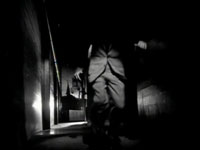 |
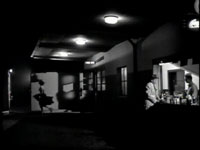 |
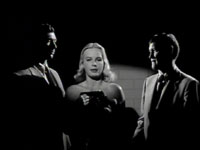 |
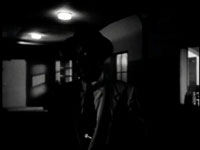 |
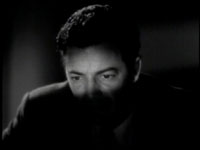 |
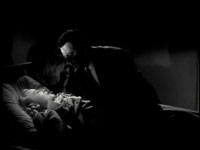 |
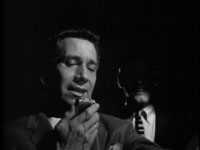 |
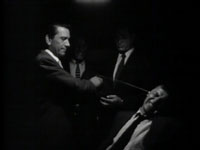 |
 |
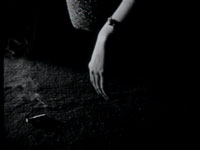 |
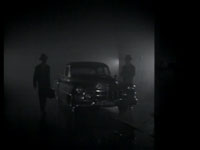 |
 |
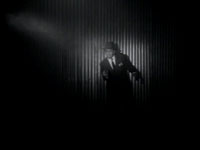 |
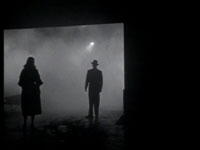 |
|
Ungarischer Kameramann in Hollywood, einer der rührenden Chefoperateure der späten 40er und der 50er Jahre. Der aus dem österreichisch-ungarischen Grenzgebiet stammende Johann Altmann, der Anfang der 20er Jahre erste Film-Erfahrungen als Kameraassistent in Berlin gesammelt hatte, kam 1924 in die USA und fand bei der MGM Anstellung als Labor-Techniker. Vier Jahre darauf wechselte er als Kameramann zur Paramount. In den kommenden Jahren arbeitete er in kameratechnischen Bereichen in Frankreich und in Südamerika (vor allem Argentinien), wo er neue Filmstudios für die Gesellschaft Lumiton & Sono Film aufbauen half. Anschließend fotografierte und inszenierte Alton einige argentinische Filme, bis er 1937 wieder in die USA zurückkehrte. Dort begann er 1939 eine zwei Jahrzehnte andauernde Tätigkeit hinter der Kamera. Zunächst fotografierte Alton diverse B-Pictures (vor allem für Anthony Mann), deren unheimliche Wirkung in nicht unerheblichem Maß auf Altons sicheres Gespür für Ausleuchtung und Licht-und-Schatten-Wirkung beruhten. Mit Beginn der 50er Jahre war Alton sowohl für Top-Produktionen mit großem Budget und mitunter ebensolchem künstlerischen Anspruch tätig wie auch für Routine-Western und Abenteuerstreifen des Regie-Veteranen Allan Dwan. 1960 verließ Alton die Filmindustrie im Streit, enttäuscht über die kurzsichtige, unkünstlerische Haltung der Produzenten und Manager in der Branche. Ein Rückkehrversuch scheiterte 1961, als während der Dreharbeiten zum Burt-Lancaster-Film »Der Gefangene von Alcatraz« Alton und der »Alcatraz«-Regisseur igs Charles Crichton nach nur zwei Wochen Drehzeit ausgewechselt wurden. Alton ging daraufhin mit seiner Frau bis in die frühen 80er Jahre auf ausgedehnte Weltreisen und konzentrierte sich auf die Malerei, ein Thema, zu dem er bereits 1949 ein Buch, »Painting With Light«, veröffentlicht hatte. |
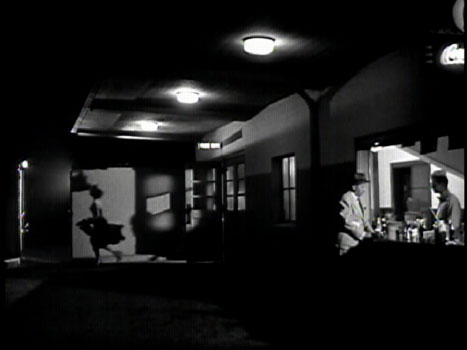
|
While cinematographer John Alton was adept with color photography, he was at his arguable best when using black and white. Indeed it is in the shadowy realm of film noir that he is best known. In that genre, Alton possessed the rare ability to photograph exterior shots as effectively as studio work. Starting at MGM as a lab technician in 1924, Hungarian-born Alton became a cameraman within four years. He went to Europe with Ernst Lubitsch to film backgrounds for The Student Prince (1927) and ended up staying in Paris for a few years heading the camera department of Joinville Studios. Alton moved to Argentina in 1932 to design the country's first sound film studio. He spent seven years there and returned to Hollywood with a dozen films under his belt, a directorial credit for Papa's Boy, an award for best photography from the Argentine film industry and a wife, journalist Rozalia Kiss -- they would remain married until her death in 1987. Back in Hollywood in 1940, Alton found that he couldn't rely upon his foreign reputation to secure a big-studio assignment. Setting his sights a bit lower, he chose to work at Republic, a B-picture factory which prided itself on the excellence of its photography. Alton quickly established himself as a talented cinematographer, able to work quickly and create a wide range of effects in varying conditions. Perhaps an early exposure to German Expressionism during his European childhood affected him, for Alton showed special affinity for highly contrasted black and white photography and unusual camera angles designed to symbolically enhance and sometimes mock the onscreen action. Such techniques made him ideal for film noir; one of the best examples of Alton's noir work can be seen in Big Combo (1955). Following WW II service with the Army, during which time he rose to the rank of captain, Alton returned to Hollywood and worked with other B-studios such as RKO and Monogram. By this time, he had often worked with director Anthony Mann and when Mann went to MGM to do Border Incident (1949), Alton followed. During his tenure with MGM, Alton became one of Vincente Minnelli's preferred lighting directors and was responsible for shooting Father of the Bride (1950), Father's Little Dividend (1951) and most notably An American in Paris (1951) his first work in Technicolor. For this latter film, Alton won an Oscar for shooting the ballet sequence. Other Minnelli films include Tea and Sympathy (1956) and Designing Women (1957). Alton also frequently worked with Richard Brooks on such films as The Brothers Karamazov (1958) and Elmer Gantry (1960). Throughout the '50s, Alton was in and out of MGM due to numerous disagreements of political and personal natures with various studio executives. When he and director Charles Crichton were abruptly released from Birdman of Alcatraz in the midst of production Alton decided to permanently quit the motion picture industry. Instead, Alton spent his days travelling, writing books on photography and working on his painting. In the 1970s, a new generation discovered his film work, but Alton remained elusive until 1993 when he resurfaced and attended a tribute for him at the Telluride Film Festival. After that, Alton showed up at a tribute in Vienna and for a retrospective at New York's Museum of Moving Image.
|
Last update: 3 Oct 2002


